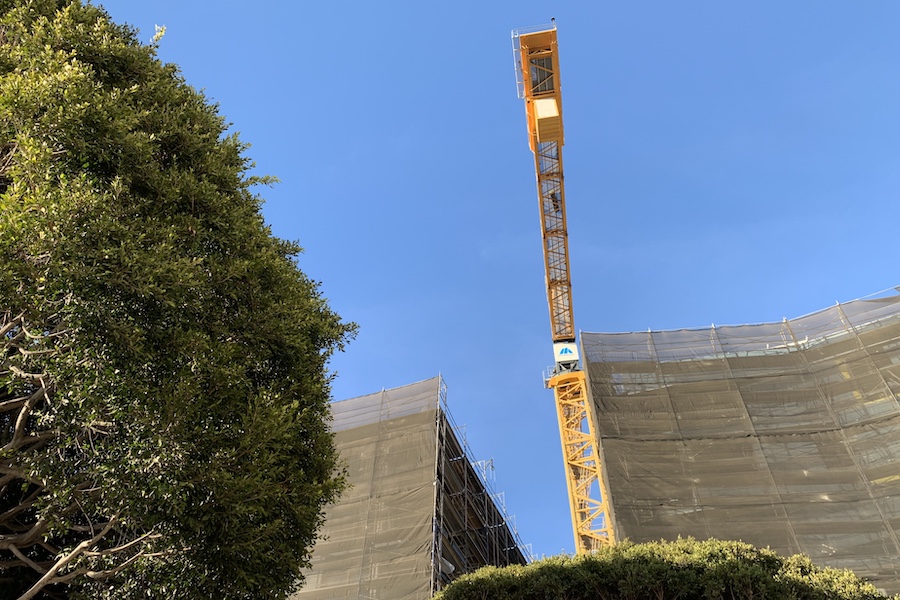By Tom Elias, Columnist
It’s happening. Despite the best efforts of California’s highly ideological, developer-financed state legislators, the solution to this state’s widely acknowledged housing shortage is coming fast, driven more by market forces than by state laws.
Even local bureaucrats who had long ignored the obvious solution are now gradually having to recognize it.
That solution: Convert or repurpose the vast amount of square footage in office buildings and towers that has become vacant over the 20 months since the coronavirus pandemic set in and changed the work habits and environments of millions of white collar employees and their bosses.
All over California – and nationally, too – businesses from stock brokerages and law firms to insurance companies and medical billing services revised their workspace requirements, downsizing quarters or simply letting their employees work from home.
This allows moves by thousands of workers, who now need only rarely appear in company offices, from high-rent areas to more countrified housing where they get more square footage, more fresh air and more freedom for much less money.
It’s one reason San Francisco and other large cities have seen rents and their populations drop during the pandemic. It’s a reason rents and housing demand are up in the Fresno area, where prices nevertheless remain much lower than in coastal areas.
But a move back to cities is coming, as more and more urban and suburban housing promises to become available – with no detrimental effects on existing neighborhoods, unlike the two major housing bills that became law in September. Those measures may be overturned by an impending ballot initiative. The two laws, known as SB 9 and SB 10, aim to densify single family neighborhoods while lining the pockets of developers who finance the campaigns of many legislators.
As this column first noted in March 2020, barely a month after the pandemic began in earnest, conversions of existing office space to housing have been inevitable since workers discovered the joys of operating from home and employers saw their productivity generally remaining high.
For as office leases expired or were cancelled, the value of myriad large buildings and the stock prices of real estate investment trusts that own many of them became endangered. That meant space would be repurposed. The same realities also were bound to threaten city and county finances all over California. When large buildings become vacant and are assessed downward for tax purposes, they sharply reduce property tax revenue that is the base of local government finances.
At first, this was all theoretical. But now it’s going big, with much more to come. As of early November, the Los Angeles area alone had seen approvals for conversions of office space into more than 4,300 apartments and condominiums, with plenty more in the pipeline, according to a report from the rent-tracking group Rent Cafe. Statewide, an estimated 12,000 units have been approved for conversion.
By contrast, only about 200 such conversions had been approved by the end of 2020. The converted housing units will be finished much sooner and with far less environmental impact than new structures.
Conversions also allow a great variety of housing, from luxury penthouse condos with ocean views to far smaller studio apartments on lower floors where residents might hear some street noise, but pay far less than folks on the top floors.
The number of units approved so far in Los Angeles is the highest in the nation, in part because pandemic lockdowns and changes began here first. But New York City, for one other example, officially expects many thousands of conversions within the next two years.
Said Emil Malizia, a faculty member in the University of North Carolina’s highly-rated Department of City and Regional Planning, “The most compelling reason to choose adaptive reuse for apartments versus new apartment construction is the much lesser environmental impact.”
This was clear from the first days of the pandemic, when, for example, a stock brokerage in Pasadena that had recently remodeled office space to handle 95 employees daily suddenly realized only five were using all that space.
It didn’t take a genius to see change was coming. Now it’s high time this state’s top officials take the lead in shaping and encouraging it.
Email Thomas Elias at tdelias@aol.com. His book, “The Burzynski Breakthrough, The Most Promising Cancer Treatment and the Government’s Campaign to Squelch It” is now available in a soft cover fourth edition. For more Elias columns, visit www.californiafocus.net













